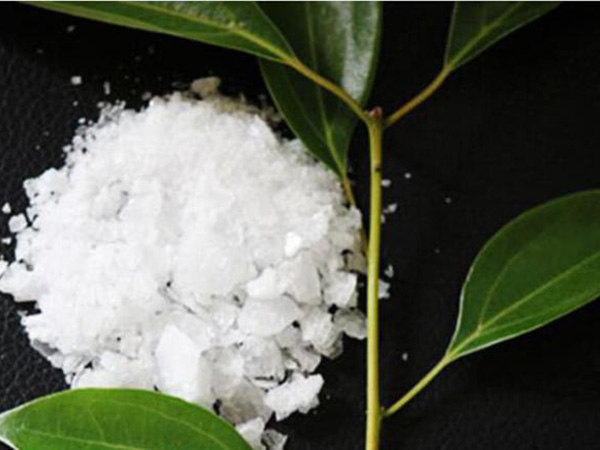
Discovery of Natural Borneol in Original Plants in China
In 1987, the Forestry Research Institute and other units in Ji'an, Jiangxi Province discovered a chemical type of camphor tree rich in right-handed borneol - borneol camphor. Natural borneol similar to "plum blossom borneol" can be obtained by distilling and cooling fresh branches and leaves of borneol camphor. It was included in the 1996 edition of the "Jiangxi Province Chinese Herbal Medicine Standards" under the name "natural borneol (natural right-handed borneol)". This natural borneol was included as natural borneol (right-handed borneol) in the 2005 to 2020 editions of the "Chinese Pharmacopoeia".
During the same period, a special chemical type of camphor tree, Cinnamomum longepaniculatum (Gamble) N. ChaoexH. W. Li, was discovered in Xinhuang County, Hunan Province. It can also be used to extract dragon brain, also known as dragon brain camphor. A special chemical type of Cinnamomum burmannii (C.C. etTh. Nees) Bl. was discovered in Guangdong Province and named Plum Blossom Tree. Both of these plants can be used for extracting and preparing natural ice flakes.
Research Conclusion
The ice flakes used in ancient times were Longnaoxiang, which originated in Padang, Sumatra, Indonesia. Its ingredients are almost entirely right-handed Longnao (containing small amounts of huperzine, β - elemene, caryophyllene, Longnaoxiang ketone, and cocaine diol). Although synthetic and natural ice flakes are both substitutes for Longnao fragrance, the right-handed Longnao content of natural ice flakes can also reach over 99%, which is relatively closer to Longnao fragrance. The main component of synthetic borneol is racemic camptothecin, which differs significantly from the composition of camptothecin. Traditionally, using natural ice flakes is in line with medicinal traditions.
Resource utilization perspective
At present, China has abundant resources for extracting right-handed borneol. The Chinese Pharmacopoeia (2020 edition) stipulates that natural borneol comes from the Cinnamomum camphora (L.) Presl plant in the Lauraceae family. The "natural right-handed borneol" included in the 2010 edition of the Guangdong Provincial Chinese Medicinal Materials Standards is Cinnamomum burmannii (C. G. et Th. Nees) Bl., a plant in the Lauraceae family.
The natural sources of ice flakes mentioned above are plants that grow rapidly and have no obstacles to reproduction. They are all native biological species in China and do not pose any ecological security issues. They are a valuable resource for the rapid promotion and cultivation of ice flake medicinal materials.
Safety perspective
From the existing literature, it can be seen that levo -, right-handed, racemic, and allosaurus all have certain toxicity, but allosaurus is more toxic and its toxicity mechanism is significantly different from that of saurus. Most studies suggest that right-handed borneol has a faster metabolism and does not accumulate toxicity.
There is a lack of systematic toxicological research on natural and synthetic borneol. Based on current literature, most studies believe that natural borneol is safer than synthetic borneol, with right-handed borneol having the highest safety. Due to the possible impurities of camphor in different natural ice flakes, there may be differences in toxicological results caused by camphor.
Ecological and Environmental Protection Perspective
The main chemical synthesis methods for synthesizing borneol include camphor pinene and turpentine synthesis method, camphor reduction method, etc. Camphor reduction method involves dissolving camphor in ethanol and reducing it with metallic sodium (Birch reduction), or using copper, nickel, or other catalysts to catalyze the hydrogenation of camphor to produce camphora. The synthesis methods of camphorpinene and turpentine include acid catalyzed esterification saponification of pinene, direct hydration of pinene, and enzymatic conversion of pinene and turpentine. The above chemical synthesis methods all have certain environmental pollution problems. The extraction of natural dragon brain only requires steam distillation, and there are basically no more complex chemical processes, which is superior to synthetic borneol from the perspective of environmental protection.










